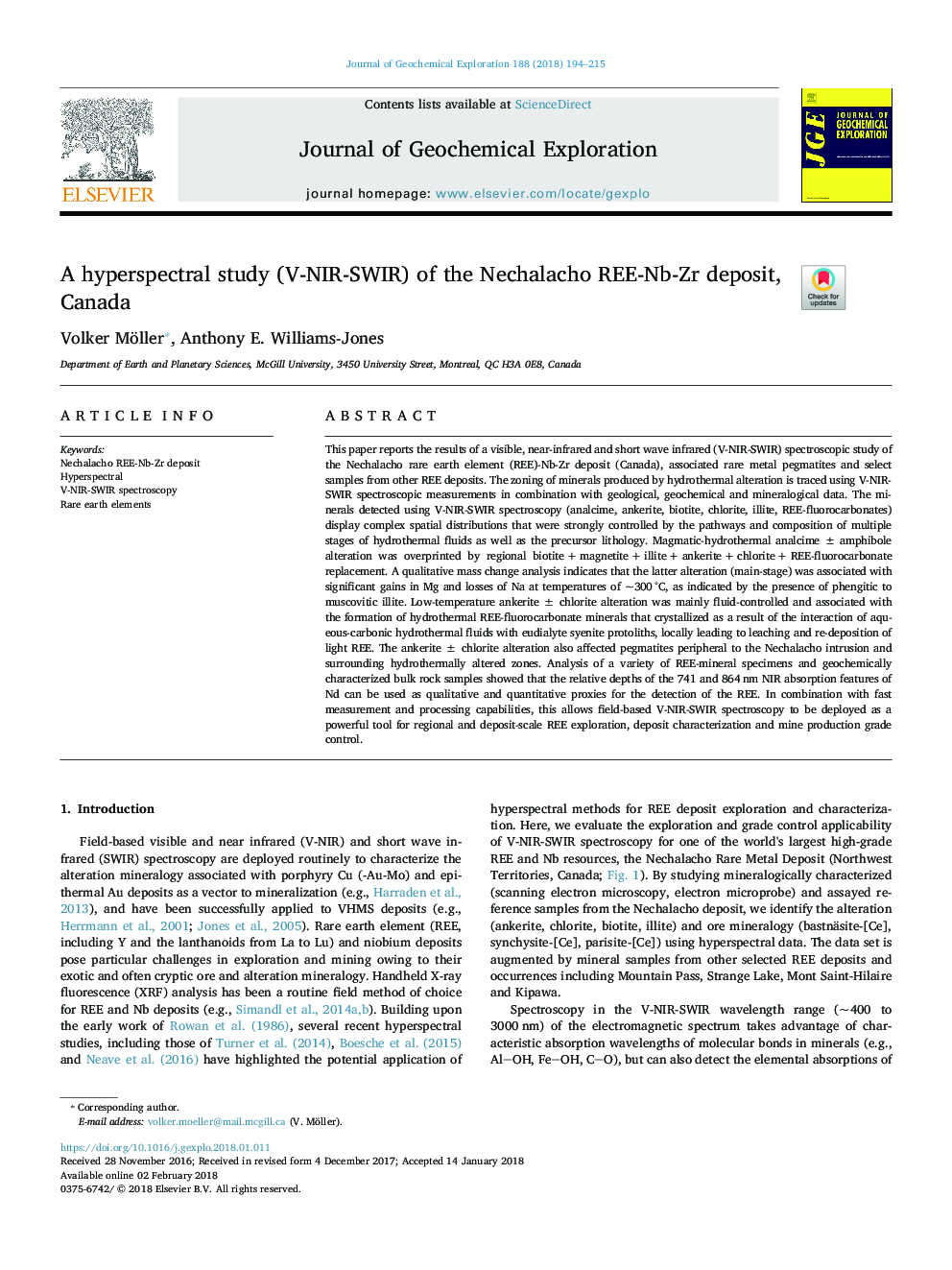| Article ID | Journal | Published Year | Pages | File Type |
|---|---|---|---|---|
| 8866001 | Journal of Geochemical Exploration | 2018 | 22 Pages |
Abstract
This paper reports the results of a visible, near-infrared and short wave infrared (V-NIR-SWIR) spectroscopic study of the Nechalacho rare earth element (REE)-Nb-Zr deposit (Canada), associated rare metal pegmatites and select samples from other REE deposits. The zoning of minerals produced by hydrothermal alteration is traced using V-NIR-SWIR spectroscopic measurements in combination with geological, geochemical and mineralogical data. The minerals detected using V-NIR-SWIR spectroscopy (analcime, ankerite, biotite, chlorite, illite, REE-fluorocarbonates) display complex spatial distributions that were strongly controlled by the pathways and composition of multiple stages of hydrothermal fluids as well as the precursor lithology. Magmatic-hydrothermal analcimeâ¯Â±â¯amphibole alteration was overprinted by regional biotiteâ¯+â¯magnetiteâ¯+â¯illiteâ¯+â¯ankeriteâ¯+â¯chloriteâ¯+â¯REE-fluorocarbonate replacement. A qualitative mass change analysis indicates that the latter alteration (main-stage) was associated with significant gains in Mg and losses of Na at temperatures of ~300â¯Â°C, as indicated by the presence of phengitic to muscovitic illite. Low-temperature ankeriteâ¯Â±â¯chlorite alteration was mainly fluid-controlled and associated with the formation of hydrothermal REE-fluorocarbonate minerals that crystallized as a result of the interaction of aqueous-carbonic hydrothermal fluids with eudialyte syenite protoliths, locally leading to leaching and re-deposition of light REE. The ankeriteâ¯Â±â¯chlorite alteration also affected pegmatites peripheral to the Nechalacho intrusion and surrounding hydrothermally altered zones. Analysis of a variety of REE-mineral specimens and geochemically characterized bulk rock samples showed that the relative depths of the 741 and 864â¯nm NIR absorption features of Nd can be used as qualitative and quantitative proxies for the detection of the REE. In combination with fast measurement and processing capabilities, this allows field-based V-NIR-SWIR spectroscopy to be deployed as a powerful tool for regional and deposit-scale REE exploration, deposit characterization and mine production grade control.
Keywords
Related Topics
Physical Sciences and Engineering
Earth and Planetary Sciences
Economic Geology
Authors
Volker Möller, Anthony E. Williams-Jones,
